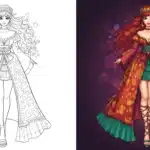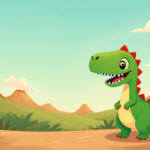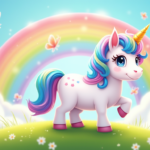We offer a wide collection of free, high-quality printable coloring pages for kids and adults. From cute animals to intricate mandalas, our designs bring creativity and relaxation to everyone. Download, print, and start coloring today!

Introduction how to draw a dog
Picture this: you’re sitting with your morning coffee, watching your dog chase their tail, and suddenly you think, “I want to sketch this goofball!” But then reality hits – where do you even start? The good news? Drawing dogs isn’t about being born with magical artistic powers. It’s about understanding a simple truth: every masterpiece begins with basic shapes dancing together on paper.
I’m about to share something most drawing tutorials won’t tell you upfront. You don’t need to choose between “stick figure amateur” and “Renaissance master.” There’s a sweet spot in between where you can create drawings that genuinely capture your dog’s personality, and I’ll show you exactly how to get there.
What sets this guide apart? Instead of overwhelming you with one complex method, we’re exploring three completely different artistic approaches. Think of it as your artistic buffet – try the quick cartoon sketch when you’re doodling during meetings, dive into realistic techniques when you want to impress yourself, or embrace the trendy chibi style that’s taking social media by storm.
All step for Draw a dog
step 1

step 2

step 3

step 4

step 5

step 6

step 7

step 8

step 9

step 10

step 11

Table of Contents
The Artist’s Mindset: 5 Minutes That Change Everything {#mindset}
Your Creative Arsenal (Keep It Simple)
Here’s what I love about learning how to draw a dog – you probably already own everything you need. Raid your junk drawer for a pencil, grab any paper (yes, even the back of an envelope works), and you’re equipped for success.
Traditional route? Any pencil will do, though a 2B gives you nice, smooth lines. Add some paper and an eraser, and you’re set. Digital enthusiast? Whether you’re wielding a professional tablet or sketching on your smartphone, the core principles remain identical.
The Reference Revolution
Professional secret time: every artist you admire uses references. Not sometimes – always. Before diving into our easy dog drawing adventure, choose a dog photo that speaks to you. Maybe it’s your neighbor’s Golden Retriever or a random Instagram pup that made you smile.
References aren’t training wheels you’ll eventually outgrow. They’re your North Star, keeping you grounded in reality while your creativity soars.
Shape Language: Your New Superpower
Ready for the breakthrough moment? Dogs aren’t mysterious, complex creatures to draw – they’re simply collections of familiar shapes having a conversation. When you draw a dog step by step, you’re essentially becoming a shape translator.
That adorable head? It’s a circle with attitude. The body? An oval with dreams. Legs? Cylinders on a mission. Once this clicks, you’ll see drawing in a whole new light.
Approach 1: Speed Cartoon Method {#speed-cartoon}
Time to create magic in minutes! This method prioritizes fun over perfection, making it ideal for quick sketches, doodling with kids, or those moments when you just want to capture your dog’s silly expression.
Foundation Phase: The Core Shapes
Begin with your dynamic duo: two circles that’ll become your dog’s foundation. Imagine you’re building with blocks – place a larger circle (your dog’s torso) and position a smaller circle above and slightly forward for the head.
Expert tip: Imperfect, wobbly circles can bring charm and personality to cartoon drawings. Embrace the imperfection!
Connection Magic: Building the Bridge
Here’s where your circles transform into something recognizably dog-like. Draw two gentle curves connecting your circles – these create the neck and back. Think of a gentle hill rather than sharp angles.
Next, extend a small oval from the front of the head circle. This becomes your dog’s muzzle – the gateway to all that personality we’re about to add.
Support System: Legs That Work
Four simple tubes extending downward from your body circle create instant legs. Here’s a proportion secret: front legs should be slightly longer than back legs for natural-looking stance.
Cap each leg with a small oval paw. Keep them simple – we’re suggesting paws, not creating anatomical studies.
Personality Boosters: Ears and Tail
Ears define breed personality instantly. Floppy ears? Sketch teardrop shapes dangling from both sides of the head. Perky ears? Triangular shapes pointing skyward work perfectly.
The tail tells a story. Curved and happy? Straight and alert? Curly with attitude? Let your dog’s personality guide this choice.
Life Injection: The Facial Features
Two small circles become eyes, positioned slightly above the head’s center line. A tiny triangle at the muzzle tip creates the nose, while a simple curved line underneath suggests a gentle smile.
Want extra personality? Experiment with different eye shapes, add eyebrows, or include a playful tongue.
Refinement Ritual: Clean-Up Time
Carefully erase your construction circles while preserving your final dog outline. This transformation moment never gets old – watching your sketch emerge from the guidelines feels like magic every time.
Add finishing touches: a collar, some spots, or a shadow beneath your dog to anchor them to the ground.
Approach 2: Observational Realism Technique {#observational}
Ready to challenge yourself? This approach emphasizes capturing accurate proportions and structure while staying easy for beginners to follow. We’ll work with the beloved Labrador Retriever – a breed that embodies classic dog proportions.
Structural Foundation: The Framework
Start with two ovals representing your dog’s core masses: a larger oval for the chest/ribcage area and a smaller oval for the hip region. Position them as if connected by an invisible spine, with the chest oval positioned higher.
These aren’t just random shapes – they represent the actual bone structure beneath your dog’s fur and muscle.
Anatomical Mapping: The Skeleton Emerges
Connect your foundation ovals with curves suggesting the spine and belly line. Add a smaller oval extending forward from the chest for the neck, and position another oval forward and down for the head placement.
Critical proportion knowledge: a Labrador’s head length roughly equals the distance from chest to front leg attachment point. Use this relationship to check your accuracy.
Joint Architecture: Building Realistic Legs
This step elevates cartoon sketches to realistic drawings. Instead of simple tubes, we’ll map leg structure using guidelines and joint markers.
Draw lines extending from your body ovals, then add small circles marking major joints: shoulder, elbow, wrist, hip, knee, and ankle. This creates a framework for believable leg construction.
Head Construction: Breed-Specific Features
Transform that head oval into recognizable Labrador features. Labs have characteristic broad skulls with medium-length muzzles. Stretch the head oval forward to form a muzzle that is about one-third the total length of the head.
Add cross-guidelines to help position ears and eyes accurately. Eyes sit roughly at the head’s midpoint, while ears attach near the top and hang to jaw level.
Body Integration: Creating the Silhouette
Follow your construction guidelines to create smooth, confident outlines connecting all elements. Labradors possess athletic, muscular builds, so avoid thin or delicate lines. Your strokes should suggest strength and substance.
Detail Integration: Bringing Life to the Drawing
Position almond-shaped eyes along your guideline for realistic appearance. The nose, sitting at the muzzle’s end, should resemble a rounded triangle or heart shape.
Extend the mouth line back from the nose, and add those characteristic hanging Labrador ears framing the head.
Use short, directional strokes to suggest fur texture, especially along the outline around the chest and legs where the coat thickness changes.
Approach 3: Chibi Magic Style {#chibi-magic}
Time to embrace maximum cuteness! This Japanese-inspired style exaggerates adorable features for irresistible results. Our star? The internet’s favorite breed – the Corgi!
The Foundation: Loaf Architecture
Begin with what I call the “bread loaf” silhouette – a wide, low rectangle with thoroughly rounded corners. Corgis naturally possess low-slung bodies, and chibi style amplifies this characteristic dramatically.
Make this foundation wider than tall, resembling a hamburger bun resting on its side.
Head Dominance: The Oversized Approach
Chibi magic happens here – the head should nearly match the body in size! Sketch a large circle overlapping your loaf shape to achieve that distinctive top-heavy look.
In true chibi style, the head typically measures between half and two-thirds of the total body height. Bigger heads equal exponentially more cuteness.
Signature Ears: Corgi Classics
Corgis are renowned for their prominent, pointed ears, and chibi interpretation makes them even more dramatic. Create two large triangular shapes atop the head – they should approach the head’s own height.
Angle them slightly outward for that alert, characteristically perky Corgi expression.
Stubby Limbs: Maximum Adorability
Chibi proportions demand irresistibly short legs. Draw four compact, thick cylinders extending from the body – each barely longer than its width.
Add tiny oval paws, maintaining everything proportionally small compared to that dominant head and body combination.
Expression Amplification: The Face That Melts Hearts
Chibi expressions are characterized by large, round eyes that take up a significant portion of the head. Add small light reflections in each eye for that sparkling, lively appearance.
Keep the nose minimal – a tiny triangle or simple dot works perfectly. For the mouth, a subtle curved line or implied smile maintains the innocent charm.
Consider adding rosy cheek circles for extra endearment factor!
Finishing Flourishes: The Complete Package
Add that famous Corgi tail, but maintain chibi proportions with a small, stubby curve pointing upward.
Chibi style embraces adorable accessories — tiny bow ties, jingling collar bells, and miniature hats all add to the irresistible cuteness.
Exclusive Practice Bundle {#practice-bundle}
Transform your learning with my specially designed practice collection! This comprehensive bundle includes step-by-step templates for every style we’ve explored, plus exclusive reference materials you won’t find anywhere else.
Your complete package includes:
- Guided templates for cartoon, realistic, and chibi approaches
- Proportion reference charts with measurement guides
- Troubleshooting guide for common challenges
- Blank practice grids for experimental sketching
- Bonus: Quick-reference card with essential tips
Instant access: Enter your email address below to receive your complete Dog Drawing Practice Bundle immediately. No promotional emails – just valuable drawing resources delivered to your inbox!
[Email Collection Form – Get Your Free Practice Bundle Now]
Level-Up Secrets {#level-up}
Avoiding Amateur Pitfalls
Weak Foundation Syndrome: Many beginners rush past the construction phase, resulting in wobbly, unstable-looking dogs. Solution: invest time in your initial shapes and guidelines. Strong foundations create confident final drawings.
The Floating Effect: Dogs that appear to hover look unnatural and incomplete. Fix this by adding simple ground shadows or basic environmental context lines.
Symmetry Struggles: Uneven eyes or misaligned features distract viewers instantly. Always use light guideline crosses to maintain facial feature alignment.
Dimension Magic: Simple Shading
Transform flat drawings into three-dimensional forms with strategic shading. Imagine consistent light source positioning – typically above and to one side of your subject.
Areas facing away from this light source should receive darker tones. Start with subtle shading under the belly, behind legs, and beneath the chin area.
Texture Mastery: Fur Without Fuss
Suggesting fur doesn’t require drawing individual hairs! Master these efficient techniques:
Directional Strokes: Use short, quick marks following natural fur growth patterns along your dog’s outline.
Selective Texturing: Add texture strategically – emphasize areas like chest and leg regions while keeping other areas smooth for contrast.
Layered Approach: Build texture gradually with multiple stroke layers rather than attempting to achieve final texture in single passes.
Your Artistic Adventure Begins
You now possess three distinct approaches to draw a dog step by step, each serving different creative goals and skill levels. Whether you’re capturing quick cartoon sketches during coffee breaks, developing realistic portraits of beloved pets, or creating adorable chibi characters for social sharing, you have comprehensive tools for success.
Remember this fundamental truth: every accomplished artist began exactly where you are now – with enthusiasm, basic tools, and willingness to practice. The journey from beginner to confident artist isn’t about avoiding mistakes; it’s about learning from each drawing attempt.
Perfectionism is creativity’s enemy. Your first drawings won’t match your artistic vision, and that’s completely normal. Each sketch teaches valuable lessons about observation, proportion, and technique. Progress happens through consistent practice, not flawless execution.
Share your creative journey! I genuinely love seeing student progress and creative interpretations. Share your dog drawings on social media – every sketch represents growth and deserves celebration, whether it’s your first attempt or your fiftieth.
Pick up that pencil and begin. Your artistic adventure awaits, and your first dog drawing is just moments away!




